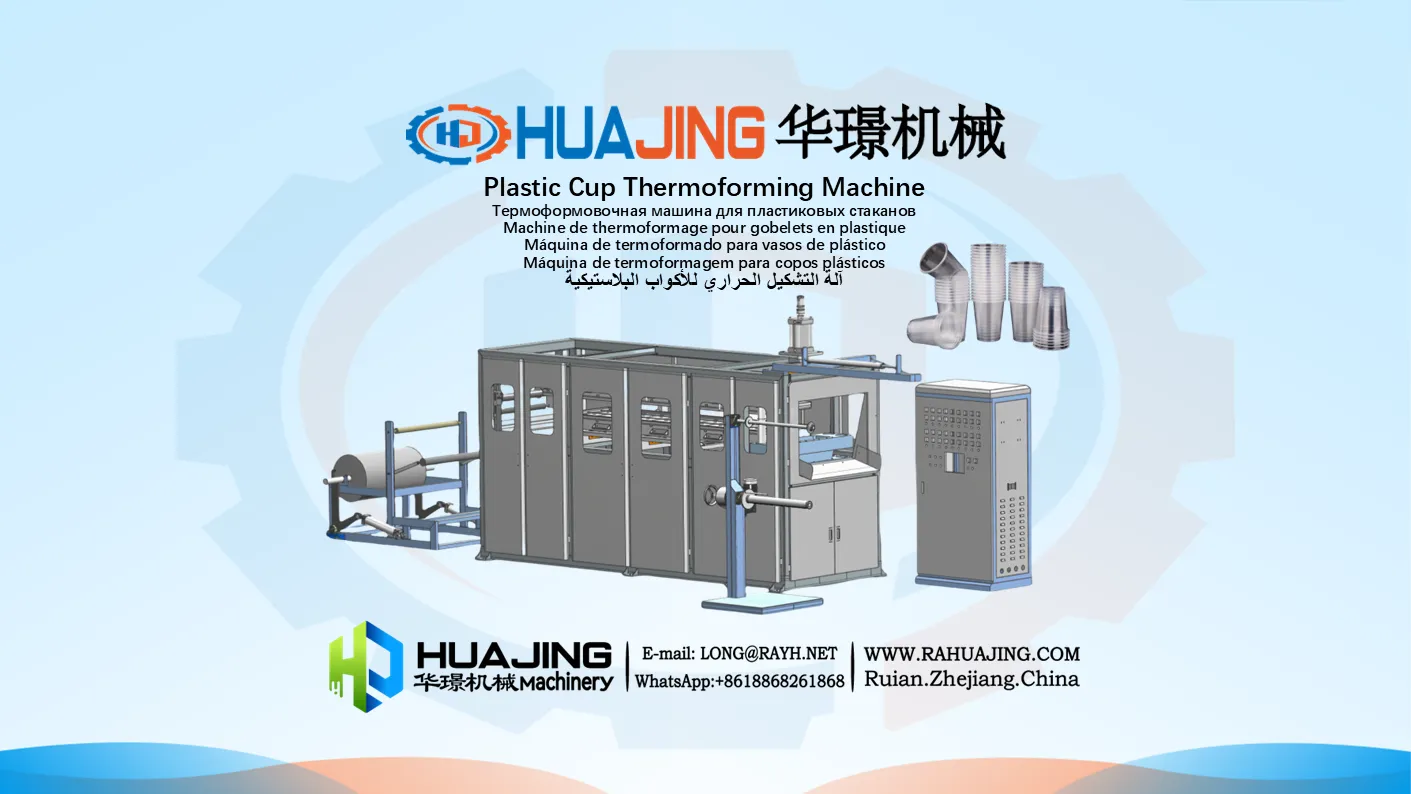
A plastic cup thermoforming machine is an automated equipment that heats plastic sheets and uses moulds to form them into plastic cups.
Below is a detailed introduction to its components and working principle:
I. Components
Heating System
Utilizes infrared heaters or hot air circulation systems to uniformly heat plastic sheets (e.g., PP, PET, PS) to their softening temperature (typically 120°C-180°C).
Forming System
Includes upper and lower molds and a pressure device. The molds are designed according to the product shape, and the pressure device uses vacuum adsorption, air pressure, or mechanical pressure to shape the softened plastic sheets into cups.
Cooling System
The formed plastic cups are rapidly cooled and set using air or water cooling systems to ensure stable product shape.
Cutting System
Employs punching molds or laser cutting equipment to separate the formed plastic cups from the sheet.
Stacking System
Automatically stacks the cut plastic cups for subsequent packaging and transportation.
Control System
Equipped with a PLC controller and touchscreen interface to adjust parameters such as temperature, pressure, forming time, and cutting accuracy, enabling automated operation.
Feeding System
Automatically feeds plastic sheets into the heating zone to ensure continuous production.
Scrap Recycling System
Collects and recycles cut scraps to reduce material waste.
II. Working Principle
Feeding and Heating
Plastic sheets are fed into the heating zone via the feeding system, where the heating system uniformly heats them to the softening temperature.
Forming
The softened plastic sheets are transferred to the forming area, where vacuum adsorption or air pressure adheres the sheets to the mold surface, shaping them into cups.
Cooling
The formed plastic cups are rapidly cooled and set within the mold using the cooling system.
Cutting
The cooled plastic cups are separated from the sheet via the cutting system.
Stacking and Collecting
The cut plastic cups are automatically stacked by the stacking system and collected at a designated location.
Scrap Recycling
The cut scraps are collected by the recycling system for reuse.
III. Workflow Diagram
Feeding → Heating → Forming → Cooling → Cutting → Stacking → Collecting
The entire process is continuous and automated, ensuring high-efficiency production.
IV. Technical Features
High Efficiency
High degree of automation and fast production speed, suitable for large-scale production.
Precision
Parameters are precisely adjusted via the PLC control system to ensure consistent product quality.
Energy Saving and Environmental Protection
Utilizes energy-efficient heating systems and scrap recycling systems to reduce energy consumption and material waste.
Versatility
Capable of producing plastic cups of different shapes and specifications by replacing molds.
V. Conclusion
Plastic cup thermoforming machines efficiently transform plastic sheets into plastic cups through processes such as heating, forming, cooling, and cutting. Their automated design and precise control systems make them essential equipment in the plastic product manufacturing industry. For more information, please contact relevant manufacturers for detailed technical support.
This introduction provides a detailed explanation of the components and working principle of plastic cup thermoforming machines, highlighting their efficiency, precision, and environmental benefits. For further details, please refer to the cited sources.


